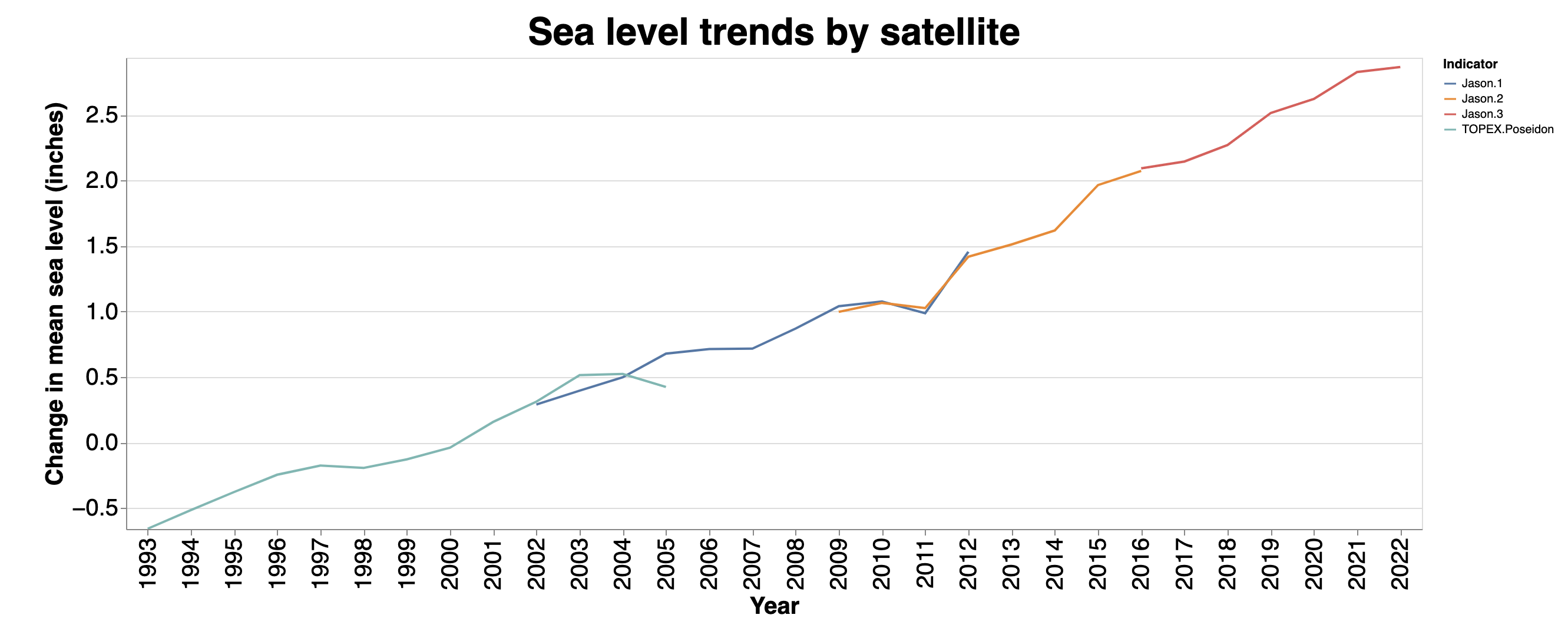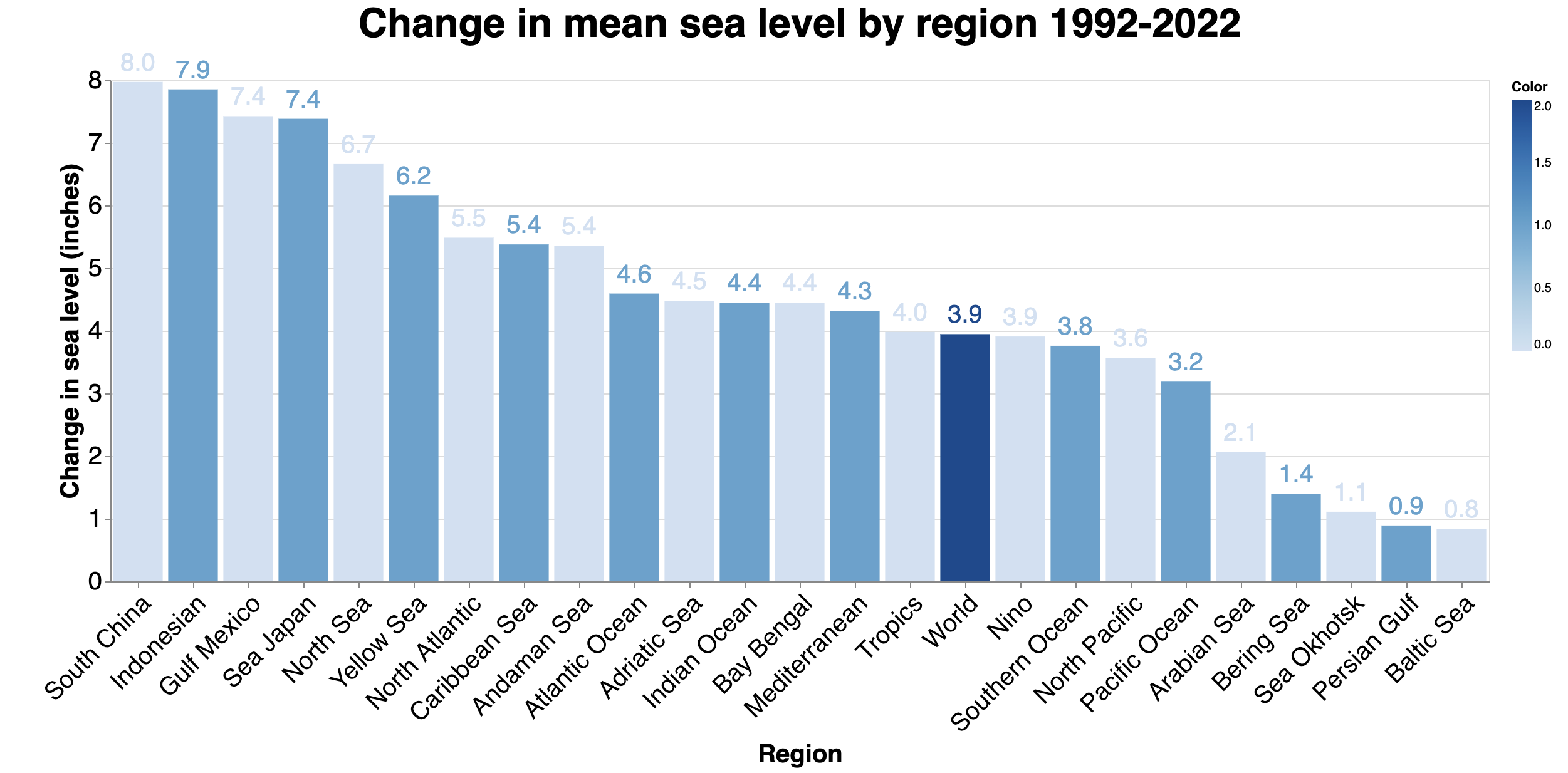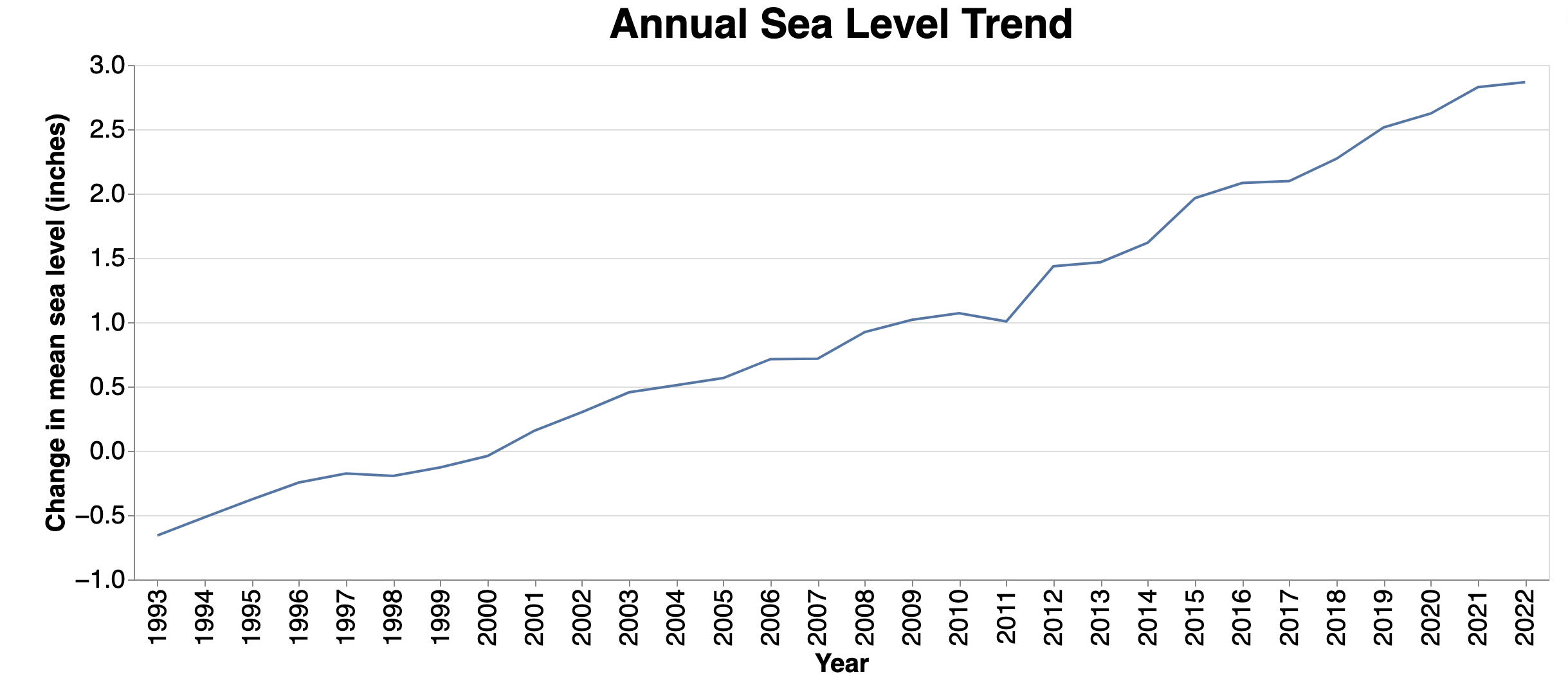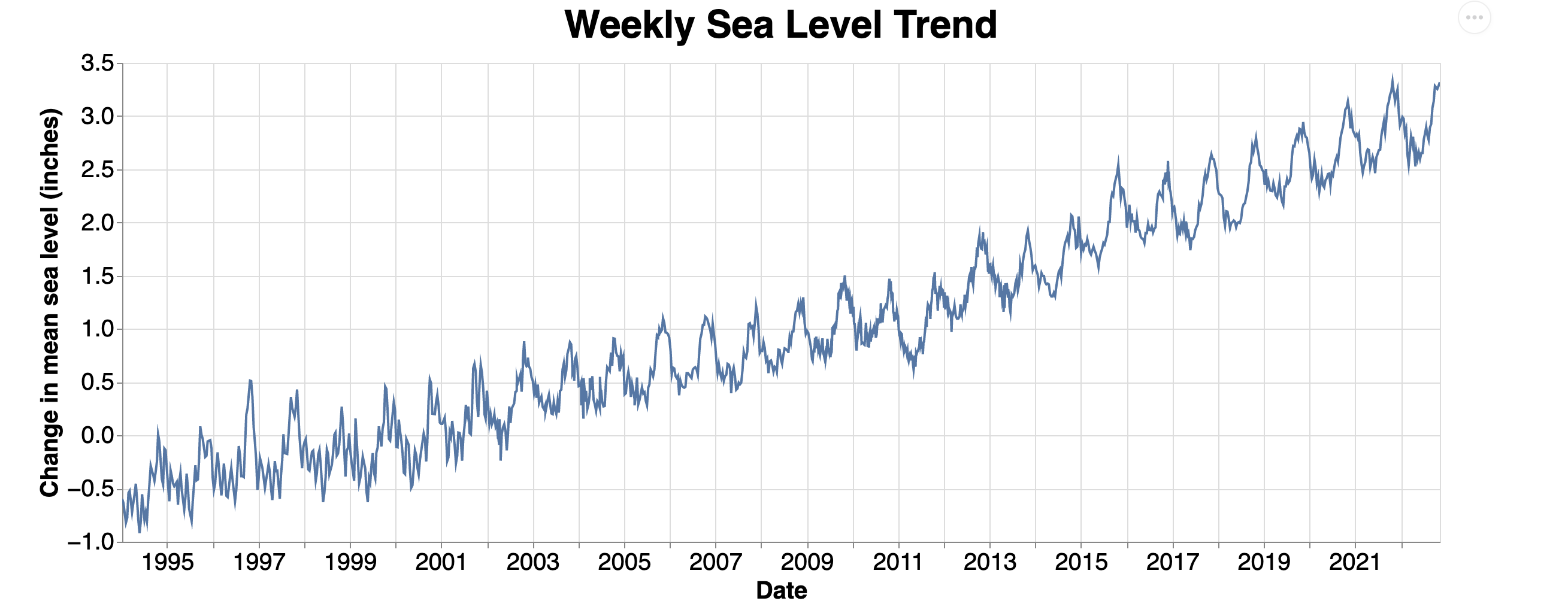
Sea Levels
Climate change and global warming have caused mass ice melting in polar regions, resulting in rising sea levels worldwide. This page provides a variety of data visualizations showing average changes in sea levels across different regions. We aim to raise awareness about our planet's rising sea levels and promote a better understanding of regional variations in sea level rises.




